-
History & Society
- Education in Pre-war Hong Kong
- History of Taikoo Sugar Refinery
- Hong Kong Products Exhibition
- Local Festivals Around the Year
- Post-war Industries
- Pre-war Industry
- The Hong Kong Jockey Club Archives
- Tin Hau Festival
- Memories We Share: Hong Kong in the 1960s and 1970s
- History in Miniature: The 150th Anniversary of Stamp Issuance in Hong Kong
- A Partnership with the People: KAAA and Post-war Agricultural Hong Kong
- The Oral Legacies (I) - Intangible Cultural Heritage of Hong Kong
- Hong Kong Currency
- Hong Kong, Benevolent City: Tung Wah and the Growth of Chinese Communities
- The Oral Legacies Series II: the Representative List of the Intangible Cultural Heritage of Hong Kong
- Braving the Storm: Hong Kong under Japanese Occupation
- A Century of Fashion: Hong Kong Cheongsam Story
Geography & EnvironmentArt & Culture- Calendar Posters of Kwan Wai-nung
- Festival of Hong Kong
- Ho Sau: Poetic Photography of Daily Life
- Hong Kong Cemetery
- Sketches by Kong Kai-ming
- The Culture of Bamboo Scaffolding
- The Legend of Silk and Wood: A Hong Kong Qin Story
- Journeys of Leung Ping Kwan
- From Soya Bean Milk To Pu'er Tea
- Applauding Hong Kong Pop Legend: Roman Tam
- 他 FASHION 傳奇 EDDIE LAU 她 IMAGE 百變 劉培基
- A Eulogy of Hong Kong Landscape in Painting: The Art of Huang Bore
- Imprint of the Heart: Artistic Journey of Huang Xinbo
- Porcelain and Painting
- A Voice for the Ages, a Master of his Art – A Tribute to Lam Kar Sing
- Memories of Renowned Lyricist: Richard Lam Chun Keung's Manuscripts
- Seal Carving in Lingnan
- Literary Giant - Jin Yong and Louis Cha
Communication & Media- Hong Kong Historical Postcards
- Shaw Brothers’ Movies
- Transcending Space and Time – Early Cinematic Experience of Hong Kong
- Remembrance of the Avant-Garde: Archival Camera Collection
- Down Memory Lane: Movie Theatres of the Olden Days
- 90 Years of Public Service Broadcasting in Hong Kong
- Multifarious Arrays of Weaponry in Hong Kong Cinema
-
History & SocietyGeography & EnvironmentArt & Culture
-
View Oral History RecordsFeatured StoriesAbout Hong Kong Voices
-
Hong Kong Memory
- Collection
- All Items
- Oral History
Recently VisitedOral History
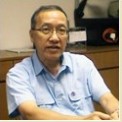
- History of China Dyeing Works. Factory Condition in Tsuen Wan. Expansion of business as far as We...
Cha Chi Ming left Shanghai and came to Hong Kong in 1949. His father-in-law, Liu Guojun, was the founder of Da Cheng Dyeing Factory in Changzhou, and was quite established in textile business in mainland China. Due to the transfer of political power in China, Cha came to Hong Kong and started China Dyeing Works at Tsuen Wan's Castle Peak Road in 1949. At the beginning it was only a small factory in the business of dyeing fabrics.It dyed fabrics in a dyeing vat. Each vat could only produce a few hundred to a thousand yards of fabrics. At that time the factory was next to a large ditch. Later on when the business expanded, the company built a new factory opposite the ditch. A bridge was also built to connect the two factories for transportation of fabrics across the ditch. Nowadays the ditch has been reclaimed and on top of it is Discovery Park and Tai Chung Road.The volume of water that ran through the ditch was not high. But when there was a typhoon or rain storm, water that came down from Lotus Hill and Tso Kung Tam could fill up the whole ditch and water would become turbulent. At the beginning China Dyeing Works did not have a sewage facility. Sewage from the dyeing process would be discharged through the ditch to the sea. Later on the general public had a stronger awareness on environmental protection. And the development of the factories’ surrounding area as well as growth of Tsune Wan’s population was rapid. Journalists and students would take photos and water sample from the ditch to argue that how dyes from the factories had caused pollution. Since its start up, China Dyeing Works has been constantly renewing its facilities and introduced many new technologies in the industry. It was the first factory in Hong Kong that used a copper roller printing machine, and also the first that employed pre-shrunk process in production.
In 1972 Chan Kin Keung joined China Dyeing Works. He studied chemical engineering in the university. There were not that many tertiary education programme dedicated to dyeing, and environmental protection as a concept had only just started to develop. At that time dyeing industry was very prosperous. There were over ten large factories with each employed over a thousand workers. These factories included China Dyeing Works, Pacific Dyeing Works, King's Dyeing Factory, Link Dyeing Works, Island Dyeing and Printing Company, Winnitex Limited, South China Bleaching and Dyeing Factory and Pollux Bleaching and Dyeing Works (located in Sai Kung), plus other dyeing factories of considerable scale. From then until the end of 1980s, fabrics made in Hong Kong included cotton, terylene, polyester/cotton blends or iron-free dacron.
China Dyeing Works set up New Territories Textiles Limited at Chai Wan Kok for the process of spinning and weaving. Cha Textiles Group had built plants in Nigeria of West Africa during the 1960s. The company was at the right time to build its vertical set-up from the cotton plantation, spinning, weaving to printing and dyeing. During its peak time, the company had over ten factories in Ghana, Congo, Togo (Lome) in West Africa, hired over 20,000 workers. Chan Kin Keung said Cha Textiles Group had a great contribution to West Africa in terms of wax-print and real wax printing technology. The company's products accounted for 80% of West African wax-print output. The company popularized a dyeing process and helped to turn this household craft into an industrial production process, which was nothing less than a miracle.
When Chan Kin Keung joined the business in 1972, he started at the printing division. Printing division was responsible for the dyeing of polyester/cotton blends and pure cotton fabrics. At that time quantity was more important than quality. Emphasis was on efficiency and there were very few complaints from clients on quality. As time went on, production cost in Hong Kong became higher and higher. Until 1987, in view of environmental protection issues, Cha Chi Ming was already preparing for the environment protection policy to be adopted in the mid 1990s. He was considering either maintaining the business in Hong Kong, or relocating to mainland China. At that time the company had applied for land at the Yuen Long Industrial Estate, and at the same time prepared to relocate the factories to the mainland. The June 4th Incident propelled Cha to keep his business in Hong Kong. In 1992, he started to build his factory at the Yuen Long Industrial Estate, and the inauguration of new factory was held on 29th September, 1993. After the factory was moved to Yuen Long, the company's business and clients shifted. Cha sent sales representatives to deal with the company's clients in Europe and US, and made fabrics according to clients' requirements. Its clients included GAP, Old Navy, Polo, Tommy Hilfiger, Nautica, Ann Taylor and Marks and Spenser, etc. They have been business partners with Cha Textiles for over a decade. These brands have higher requirements towards quality, which posed challenges to the manufacturers, and in turn pushed the manufacturers to improve on their technologies.
Environmental protection policy was implemented in Hong Kong around 1994/1995. Because of this, the majority of the dyeing plants in Hong Kong were either closed or moved to China. For instance, South China Bleaching and Dyeing Factory established its plant in Kwun Tong Industrial Estate. But since there was no space to build sewage facility, it had to close down the plant and moved the machines to mainland China. During the first or second year of implementation of the environmental protection policy, many dyeing factories disappeared. China Dyeing Works was able to survive because it was relocated to Yuen Long Industrial Estate in 1989. The sewage facility it had was considered one of the largest in Hong Kong, which could process 5,000 tonnes of sewage. Sewage would need about 20 hours to process, where the problems of pH, COD, BOD, color and temperature would be dealt with. It was quite difficult to remove the undesirables from sewage. The company brought in bio-chemical technologies from the mainland to deal with sewage. These technologies involved bio-carbonization process including anaerobic, aerobic, aeration, sediment and carbon treatment. The company spent over ten millions of dollars on sewage treatment, including infrastructure, bacteria cultivation, filler, and electricity and neutralizing materials, etc. Sewage from dyeing was alkaline so it needed to be neutralized with sulfuric acid, and then added other materials to increase its sediment and lower the temperature.
Around 1993 to 1994, after China Dyeing Works moved to Yuen Long Industrial Estate, the company partnered with famous French textile company DMC(Groupe DMC(Dollfus Mieg and Cie). Through China Dyeing Works, DMC could develop its China business, and China Dyeing Works could upgrade its technology on discharge printing and rayon fiber, etc. In 2002, when European printing and dyeing industry declined, DMC also withdrawn from the partnership and the co-operation between the two companies ended.
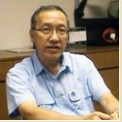
- "Printing and Dyeing business, production procedure, technology level and development of China Dy...
China Dyeing Works was mainly in dyeing of garment fabrics, such as woven fabrics, while Fountain Set (Holdings) Ltd was in dyeing of knitted fabrics, since the machines used and the dyeing process were different. While China Dyeing Works did mostly woven garment fabrics, there were other companies which took care of bed linen, curtain and utility fabrics. China Dyeing Works dealt mostly with linen and cotton (i.e. natural fiber) and was not so much involved in synthetic fiber such as nylon or polyester.
China Dyeing Works' other dyeing business. Between 1976 and 1977, China Dyeing Works acquired a factory belonged to French-owned Subliprint Far East Ltd. The factory was located at Tuen Mun. It specialized in transfer printing. Transfer printing was to print the pattern on paper, and then transfer it to polyester fabrics. Nowadays that factory had shifted to the production of stretch silk, i.e. elastic spandex used in garment fabrics.
China Dyeing Works' sources of fabrics. From 1970s to 1980s, cost of production in Hong Kong increased which drove New Territories Textiles Ltd to close its local business and production was moved to mainland China and Africa. China Dyeing Works had to import fabrics from different sources, such as greige fabrics from Pakistan, Indonesia and mainland China.
Pre-dyeing treatment. When greige fabrics arrived at a dyeing factory, they had to go through the processes of singeing and desizing. Singeing removed the trimmings from the greige fabrics so the surface would become bright and smooth. To avoid the breaking of yarn during weaving, factory would apply size on the yarn before processing. Desizing was necsseary before dyeing. Otherwise the dye would not be applied evenly. Desizing added COD loading of a dyeing factory's sewage discharge, with the indicators ranged from 1,000 ppm to 30,000 ppm. The next step was scouring. Grease and impurities were removed from the fiber. This was followed by bleaching, which was to remove the natural coloring agent with oxidant. This would turn the greige fabrics to white color. What's followed was mercerizing which meant the fabrics have to be treated with sodium hydroxide.It gave the fabrics a lustrous appearance and strengthened their stability. Also, by doing so, fabric would be more absorbing to paint. These were all pre-dyeing processes. Then the fabrics could be dyed or printed.
Dyeing and printing involved a lot of dyeing auxiliaries. Different paints were selected for different fabric according to the fabrics' type, color, and fastness. Fastness referred to the degree of a fabric's bleaching. There were numerous tests for fastness of a finished fabric. Characteristics such as strength, color fastness, slip yarn, rebound, shrinkage, formaldehyde content and functional test would be tested.A full test would cost $2000 to $3000.
There were different types of dyeing. Cold dye was better for darker colors. It had a better energy –efficiency and infiltration. Continuous dyeing had a higher efficiency and the fabrics would appear more beautiful with even color on the surface. Different processes had to work with different paints. For printing, different ways of printing, such as direct printing, discharge printing and resist printing, could create different effects.
Post-dyeing processes. After dyeing, the fabrics needed to go through fixing. Fixing involved steaming, thermal treatment and multiple washing. All dyed fabrics needed to be washed to remove the loose dye so the dye would not come off when the cloth was washed at home. After washing the fabrics needed to go through finishing. This would alter the feel of the fabric, i.e. so called “hand feel” which could produce effects included peach skin, moleskin, micro sand, carbon brush and ceramic brush, etc. Different machines were used to create these feels in a fabric. There are other functional finishings including anti-wrinkle, waterproof, oil proof, anti bacteria, anti UV, wicking, air permeability, and adding favoring agents (such as collagen or ginseng taste), etc. These were all post dyeing processes. Shrinkage was part of the finishing process. Nowadays every garment has a mandatory 3% of shrinkage. Other finishing processes include calendering and electrifying which brought a glossy texture to the fabric. Fabric became elastic, either warp-wise stretch or weft stretch, after elastane was added. A normal piece of clothing could go through 50 times of washing. Given the processing technology of China Dyeing Works, a fabric was still wrinkle-free and iron-free after it had withstood 50 times of washing. This was the result of continuous research and development. However, RandD cost had to be kept in control and environmental issues have to be considered. For instance, organic cotton and fibers that could be recycled would require certificate of proof.
In view of heightened energy costs, China Dyeing Works had to change its production strategy. The company retained its factory in Hong Kong but downsized its manpower from 500 to 120. Production remained the same but increased in outsourcing. After receiving its orders from the clients, weaving and dyeing factories in the mainland would handle the production. China Dyeing Works would co-operate with weaving and dyeing factories in the mainland which would handle the production. China Dyeing Works would be responsible for quality control and delivery schedule. The company's production in Hong Kong had decreased. Hong Kong is now a base of training, research and development , and quality control. It had taken a more trading role in its business.
Cost comparison between mainland China and Southeast Asian countries. Mainland China could not compete with India in terms of cost. According to some magazines' reports, cost of production in India was only 60% of that of mainland China, while in Vietnam the figure was 25%. China Dyeing Works had to rely on its competitiveness in terms of service, such as delivery on schedule and quality control, to maintain good relationships with its clients.
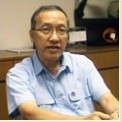
- "Vertical Set up of China Dyeing Works. Development of West African Business. Chan Dyeing Works’...
China Dyeing Works' vertical set up. Cha Textiles is now under the leadership of Cha Chi Ming's daughter Cha May Lung. The group is still heavily invested in the vertical set up of its textile production. The group recently bought 60,000 mu of land (Editor’s Note: One Mu is equal to 1/15 hectare or 1/6 acre). It all started with cotton plantation. The group established ginning factories to smash cotton fruits and extracted raw cotton. Subsequently it was spun into coarse and fine yarns.
The yarns were then woven into fabrics before they were dyed according to clients' requirements. Finally dyed fabric was passed on to garment factories. This was what we understand as a vertical set up. In the 1970s, China Dyeing Works already had vertical set up in place. It grew cotton in West Africa. It had five dyeing factories in Nigeria and Ghana. It had four spinners in Nigeria and a few others in smaller West African countries. At that time, people from Hong Kong who were sent to work in West Africa could bring their family with them. Cha Textiles developed wax printing, originally a handicraft, into a mechanical mass production. Its wax printed fabrics supplied to the West African market, and had a market share of over 80% initially. As more companies entered the market and set up wax printing factories in West Africa and mainland China, Cha Textiles decided to shrink its investment in West Africa due to fierce competition. Smuggling was very rampant in West Africa. Workers associations were also very active there. The demand of higher wages raised production cost. The prices of smuggled fabrics were even cheaper than those made locally. These factors had a heavy negative mpact to the profit of the company. Until recent years government of West African countries grant loans to attract foreign investment. The group is considering investing in West Africa again. In view of the smuggling problem, the group is planning to target higher end products to avoid counterfeit.
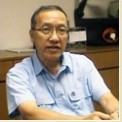
- Changes of promotion and enterprising strategies of China Dyeing Works from 1970s to 2000s
Promotion and enterprising method in recent years. For each season, such as spring in March to April or autumn in September to October, buyers would come to Hong Kong with advanced notice to their suppliers to arrange meetings. China Dyeing Works would prepare the fabric samples and new technologies to the buyers. Buyers would judge on the hand-feeling and impression on the samples to pick the right kind of fabrics. Sometimes buyers could add a few dozens of fabrics and then ask the supplier to provide samples and quotations.
The sales team of China Dyeing Works would obtain market trends and situation before meeting. For instance, if a buyer makes pants, then the sales representative would prepare thick fabrics. Or if the company was in the production of infant clothing, then lighter fabrics would be prepared. After a buyer decided on the coloring for samples, then it's followed by price negotiation and then orders would be made the next season. Buyers of China Dyeing Works were mostly renowned brands and they had a stable business relationship. When a buyer asked for a sample, the testing sample that comes up would usually pass the buyer's requirements. Buyers usually worked with several suppliers, and never put a few eggs in the same basket. Every year China Dyeing Works would send sales representatives to the US and pay visits to the final buyers and pitch the company's prints and fabrics to the buyers. These final buyers would place orders to the garment factories. They also specified certain suppliers of parts and accessories for the finished product. For instance, the buyer would request that the fabrics should come from China Dyeing Works. Then the garment factory would purchase the fabrics from China Dyeing Works accordingly. The garment factory would take care of the process during the production, such as quality control and wastage, etc. The buyer would receive the qualified final product according to schedule.
Commissioning was quite common in the 1970s. Buying offices (Fabric agents) would act as representatives for their clients, i.e. brand companies. They would handle various production processes on behalf of their clients. They helped their clients to find the right provider or company for fabrics, dyeing process and garment production, etc. These buying offices would be responsible from raw material sourcing to final production. China Dyeing Works had a rather simple business model. Upon receiving orders for a certain fabrics, it would proceed with the dyeing according to the requirements. The advantage of this approach was that the buying office would take care of production details with its clients' requirements. However the buying office would take commission. There were still buying offices acting as representatives for certain overseas brands and they would place the orders to factories in China. China Dyeing Works had various suppliers of greige fabrics, and thus could have a better control on pricing. The company does not need to work with buying offices and so can get a higher profit.
Partnership between China Dyeing Works and DMC (Dollfus Mieg and Cie) from France. China Dyeing Works helped to source fabrics for DMC. DMC had high standard on the fabrics' quality. The company would send representatives to monitor every detail including the color of the greige fabrics and quality of the finished fabrics. During that time, rayon was very popular. But when rayon was soaked with water, its ability to absorb paint would be lower which made it more difficult for the dyeing process. Not every dyeing factory could handle rayon easily. China Dyeing Works imported rayon greige fabrics from Taiwan and South Korea for further processing. The company also worked for Marks and Spencer and GAP for rayon fabrics processing. Rayon fabrics had a better drape which was more suitable for making women's dress. There was once a Subliprint factory in Tuen Mun. The factory was in transfer printing but now has shifted to production of chemicals.
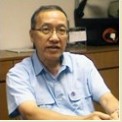
- Labour and working conditions of China Dyeing Works
There were more male workers in dyeing factories. Working conditions were not that good at older dyeing factories. Steam was employed at the production line so the whole workshop would be very hot and slippery. Male workers were needed as manual labour. Working conditions at China Dyeing Works was better. Ventilation was good so the workshop was not very hot. The number of male workers also always outnumbered female workers at China Dyeing Works. In the earlier days, all the secretaries at every production line were female. Now female employees are responsible for the lab, doing work on testing and analysis. Nowadays the numbers of male and female employees were mostly even. At the peak of the company's business in 2004, there were about 480 workers. The factory was operating in two shifts, each 12 hours.When the factory was moved to Tsuen Wan, it was operating in three shifts, each eight hours. And since the factory has moved to Yuen Long Industrial Estate, the older workers were reluctant to go so far to work. There was a lack of younger workers joining the company so there had been a shortage of manpower. The factory is now running with two shifts, each nine hours with three hours as overtime. Chan Kin Keung said when the factory was running with eight-hour shifts workers were more motivated. Now that it is 12-hour shifts workers are tired because of the long working hours. However, overtime will be paid 1.5 times of normal wages. Without the overtime work, workers would receive lower wages and this would be more difficult to keep the workers in the business.
After the factory was moved to Yuen Long Industrial Estate, the company started to provide shuttle buses for the workers. At first there were five to six buses and picked up workers as far as Kwai Tsung, as well as Yuen Long and Tin Shui Wai. When the factory was in Tsuen Wan, only trainees and some workers would be provided with living quarters. The quarters were located on the factory's rooftop, with about 10 rooms. Since they all faced the chimney of the factory so living conditions were poor. Salaries were calculated as either daily or monthly basis. Salaries for those with fewer experience or jobs such as gardener or janitor would be calculated daily. Nowadays most of the employees were with monthly salary. In the earlier days salaries were also calculated according to rank, which were workers, technicians, supervisors and managers. There was also bonus and how it was paid was also determined according to the rank. For instance the lowest rank would be normal workers, and then there were workers with a quarter of bonus, which meant they received a quarter of what was paid to normal employee as bonus. And then there were workers with a half of bonus, i.e. they received half of what was paid to employee as bonus. And then there were normal employees. When the spinning and fabric factories were in good business, a normal employee could receive up to seven or eight months' salary as bonus and a quarter of the production line workers would receive two months' salary as bonus.
Copyright © 2012 Hong Kong Memory. All rights reserved.
| Set Name |





